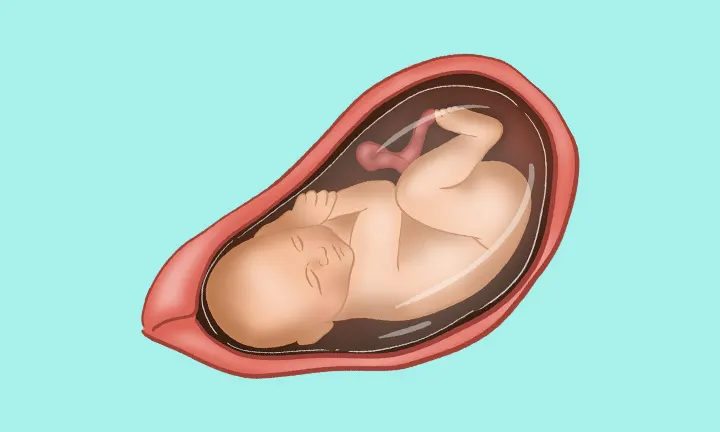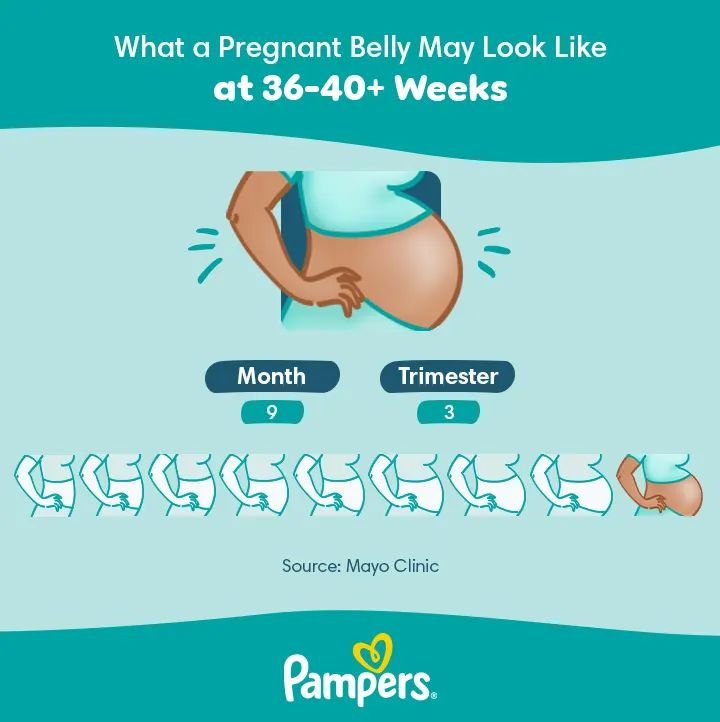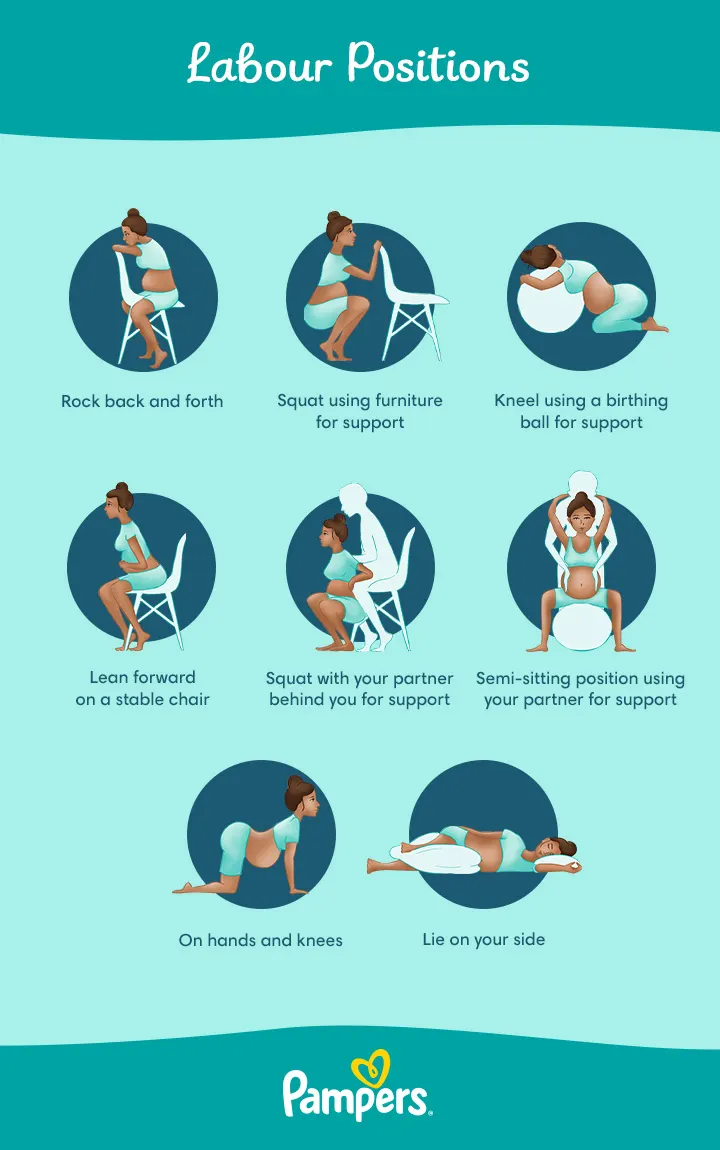37 Weeks pregnant
Welcome to your 37th week of pregnancy – your baby is nearly ready to say hello to the world! We're here to guide you through what to expect during this pivotal week of your pregnancy. We'll delve into common symptoms at 37 weeks pregnant, the size of your baby and belly, and some helpful tips for navigating this period.
Highlights at 37 Weeks Pregnant
Here are just a few of the exciting highlights from this period in pregnancy:
Your little one is about the size of a Swiss chard right now.
They may have settled into a head-down position in preparation for delivery.
Around 37 weeks pregnant or in the next few weeks, keep an eye out for those signs that labour is beginning.
Speaking of labour, you might consider checking out some labour positions and comfort measures you may want to use.
Have you picked a name yet? Our Baby Name Generator can help you sort through different options:
BABY NAME GENERATOR TOOL

Baby name generator
By gender:
By theme:
Your Baby’s Development at 37 Weeks Pregnant
Congratulations! By the end of 37 weeks pregnant you’re officially ‘full term’. Although this means that your little one is now considered mature enough to be born, you might still have a few weeks to wait before that day finally arrives.
Your baby may have turned to a head-down position around 37 weeks in preparation for birth. You may also notice your baby ‘drop’ lower down into the pelvis.
Your baby’s digestive system now contains a greenish-black substance called meconium. You may get a closer look at this sticky goo once your baby is born as meconium comes out in the form of your newborn’s first few poos!
Meconium is made up of bile and other things that your foetus has swallowed along with the amniotic fluid, such as strands of lanugo - the soft hair that covered your little one’s body until fairly recently.
Although most of the lanugo is probably gone by now, you may still see a few small patches of it here and there when your baby is born.
You probably can’t wait to finally cradle your newborn baby in your arms; but know that every day and week that passes until your due date is making your little one even better equipped for life outside the uterus. For example, they continue to gain weight, and the brain and lungs mature further.
37 Weeks Pregnant in Months
You may be wondering how many months along you are at 37 weeks pregnant, but the 40 weeks of pregnancy don’t divide neatly up into months. At a rough estimate you’re around nine months pregnant, give or take a week.
Your Baby's Size at 37 Weeks Pregnant
Now that you’re 37 weeks pregnant, your baby is about the size of a Swiss chard, measuring close to 48.6 centimetres from head to heel, and weighing in at around 3 to 4 kilograms.
Your Baby: What Does 37 Weeks Pregnant Look Like?
Wondering how your baby may be positioned at 37 weeks? Although we can’t say for sure exactly how your little one is curled up inside your belly this week, check out this illustration for a general idea of what you might see if you could take a sneak peek inside:
Your Body at 37 Weeks Pregnant
It’s rare to give birth precisely on schedule at the end of 40 weeks, so it’s a good idea to have your hospital bag packed and ready to go, just in case your labour starts sooner. At 37 weeks pregnant it’s worth brushing up on the signs of labour, so you’ll be able to recognise them in good time. If you experience any of the following symptoms at 37 weeks pregnant, it’s best not to ignore them as they may be signs of labour:
Period-like pains or cramping
Regular or painful contractions or tightening around your belly
A ‘show’ – when the mucus plug is released as a pink or bloody vaginal discharge
Waters breaking (a gush or trickle of fluid from the vagina)
Feeling sick
Diarrhoea.
Contact your doctor or midwife if you experience any of the symptoms above.
Your Symptoms at 37 Weeks Pregnant
Here are some of the symptoms you may be experiencing at 37 weeks pregnant:
Pelvic pain or pressure. When your foetus drops down into the pelvis in readiness for birth, you might feel a little extra pressure in your lower abdomen. This drop-down is often referred to as ‘engagement’ or ‘lightening’ because it can relieve the pressure on your lungs and stomach, making it easier to get your breath and possibly easing any heartburn you might be experiencing. Keep in mind that although this often happens at around 37 weeks pregnant, it might not start until just before birth, especially if this isn’t your first pregnancy.
Shortness of breath. If your little one hasn’t moved down into the pelvis yet, the pressure on your lungs could still be leaving you a little short of breath. Try to rest more if you find that you’re running out of puff. Sitting or standing up straight may also give your lungs more room to expand with each breath.
Nausea. Feeling sick is a common symptom in many stages of pregnancy. Sometimes it’s caused by pregnancy hormones, but at 37 weeks pregnant, nausea, vomiting, or diarrhoea could also be a sign that your labour is about to start.
Leaky breasts. At 37 weeks pregnant yellowish stains in your bra or fluid leaking out of your nipples is usually nothing to worry about. Your breasts can start producing milk weeks or even months before you give birth. This first milk your body produces is called colostrum. It’s far more concentrated than the regular milk you’ll produce later if you go on to breastfeed your baby. If the leaking is bothersome or uncomfortable, get some absorbent maternity pads to put in your bra, to soak up the excess milk. These will come in useful after the birth too, so don’t forget to put some in your hospital bag.
Problems sleeping. At this stage, your bump may have expanded to its full size which may in turn cause some discomfort. If you’re having trouble sleeping because of your bump, try sleeping on your side and use some pillows under your bump and between your knees for extra support. You may also experience pain when turning over in bed at 37 weeks or throughout your pregnancy. This may be due to pelvic girdle pain (PGP), which is a common occurrence during pregnancy. Discuss your symptoms with your doctor who may give you some personalised advice or treatment to help deal with the discomfort.
What Size Is a Pregnant Belly at 37 Weeks?
It’s important to remember at 37 weeks pregnant and throughout your entire pregnancy, that everyone’s belly size is different. Your doctor or midwife will likely measure the size of your uterus during antenatal appointments to ensure that you and your baby are on track.
What Does 37 Weeks Pregnant Look Like?
For an idea of what your belly might look like at 37 weeks pregnant, here’s a general guide.
Things to Consider at 37 Weeks Pregnant
Here are a few things to consider as your due date gets nearer:
Find out more about the comfort measures and pain relief options that you might want to consider or try during labour. There are lots of different birthing positions you can try, to help make your labour and delivery more comfortable for you. Some require special equipment, such as a birthing pool or ball, while for others a chair or wall might be all you need. It’s a good idea to ask ahead of time what’s available at your hospital or birthing centre. Also, try to keep an open mind. Once you’re in labour, what works for you might not be the same as the position you’d expected to find the most comfortable.
Now is a good time to research your options for feeding your baby. The choice of whether to breastfeed or formula feed is yours to make, but you may want to find out more about each. Talk to your midwife or a lactation consultant to get more information.
If you’re planning to drive home after the birth, you’ll need a baby car seat to transport your little one safely and legally. A newborn baby needs to ride in a rear-facing car seat. It’s best to try out the seat you want to buy at the shop; but if this isn’t an option for you, many manufacturers now provide online fitting guides for checking which seat will work in your car.
As your due date approaches, consider asking some trusted friends, neighbours or family members to help out with things like doing the shopping, washing clothes or looking after your older children or pets during the first few weeks with your newborn. Make a list of what you might need help with so that your helpers know exactly what they can do to lighten the load.
Around this time your doctor may offer a Group B streptococcus (better known as group B strep or simply GBS) test. This routine test (which is usually done by your doctor taking a swab of your vagina and rectum) checks whether you carry the GBS bacteria. If your test result is positive, your provider will be able to advise what treatment you’ll need to ensure your baby doesn’t come in contact with the bacteria during birth should you give birth vaginally.
Take this time now to read up on healing after childbirth.
Tip for Partners You and your pregnant partner might have been busy lately getting everything organised for your new arrival. If this is the case, take some time out to spend together. Do something you both enjoy doing as a couple, such as going for a picnic, watching a film or having a romantic dinner. |
Questions for Your Doctor at 37 Weeks Pregnant
Here are some questions you might like to ask your doctor or midwife at 37 weeks pregnant:
What happens if my baby doesn’t turn head down?
Under what circumstances might I need a caesarean section?
Is my birth partner allowed to be with me at the birth? What if I’m having a caesarean section?
How many people can I have with me during labour?
What happens right after I give birth?
How long do you think I’ll need to stay in hospital after giving birth, and what will usually happen during that time?
Who can I turn to if I have questions during the first few weeks at home with my newborn?
What are some symptoms not to ignore at 37 weeks pregnant?
What should I do if I’m 37 weeks pregnant with period pains?
FAQS AT A GLANCE
If you’ve reached 37 weeks pregnant, this is considered full term and it’s generally safe to deliver from this week onwards.
37 Weeks Pregnant: Your Checklist
This helpful checklist might be a great asset to your pregnancy journey:
If you haven’t already done so, pack your hospital bag. The big day could be just around the corner!
Stock your freezer with pre-cooked meals that just need to be heated up. You may not have the time (or energy) to cook in the first few weeks after your baby is born.
Put the finishing touches on your baby’s nursery and get all the newborn essentials you haven’t bought yet.
Consider getting a waterproof sheet to protect your mattress in case your waters break while you’re asleep.
If you see breastfeeding in your future, make sure you have several quality nursing bras. If you haven’t already, buy a breast pump if you’re planning to pump.
Consider setting up a comfortable ‘feeding station’ in your baby’s nursery or elsewhere in your home. For example, you might like to buy a comfy nursery glider, place a lamp or night light next to it, and have a nursing pillow and a quilt on hand to help you feel comfortable. Some parents also have a nursing basket nearby with supplies like tissues, burp cloths, nipple cream (if you’re planning to breastfeed) and snacks for you.
Start stocking up on all the nappies you’ll need for the first few weeks.
How We Wrote This Article The information in this article is based on the expert advice found in trusted medical and government sources, such as the National Health Service (NHS). You can find a full list of sources used for this article below. The content on this page should not replace professional medical advice. Always consult medical professionals for full diagnosis and treatment.




